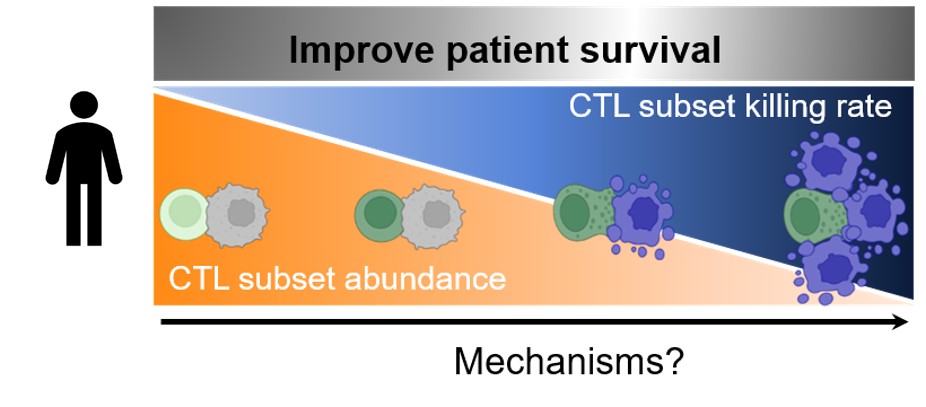
ROXANA KHAZEN
Deciphering the functional heterogeneity of
cytotoxic T lymphocytes in cancer
In France, 9,000 new cases of melanoma are diagnosed each year, with a mortality rate of 20 to 30% after five years (1,600 deaths per year). The goal of our research is to generate new knowledge that can have a broad impact on treatments for patients with melanoma and to provide new solutions that could be both clinically improved and less cost-effective.
Cytotoxic T lymphocytes (CTL) are the major cells of the immune system to fight against cancer. Recent advances in high-throughput single-cell technologies at RNA and protein level have provided evidence for a heterogeneous functional phenotype of CTLs in human tissues. Using in vitro and in vivo models, we have shown that the CTL population is mainly dominated by non/sub lethal interactions and that only a small percentage of CTLs are able to perform several rapid killing activities (Composing “Super killers”). Although such functional variabilities can be explained by several intrinsic and extrinsic factors, we hypothesize that tunable intercellular communication between CTLs may be also involved in biasing overall CTL killing activity towards an optimal outcome. To evaluate this hypothesis, several outstanding questions must be considered: How does CTL functional heterogeneity evolve during tumor annihilation? What is the identity of the CTL subset that is ultimately responsible for tumor annihilation? How can we accurately target CTL composition in human cancer to skew their responses towards a better outcome?
We believe that further examination of the molecular bases of CTL functional heterogeneity would answer these questions. On this account, we aim to define: I) Molecular determinants of CTL functional heterogeneity; II) Spatio-temporal coordination of CTL functional heterogeneity. Overall, the results of this study should elucidate the molecular and cellular mechanisms controlling the responses of CTLs against tumor cells and could help to design therapeutic strategies based on an improved collective fitness of CTLs.

Figure 1: Schematic illustration of a required favorable balance between the frequency of super and poor-killer subsets in improving patients’ survival.

